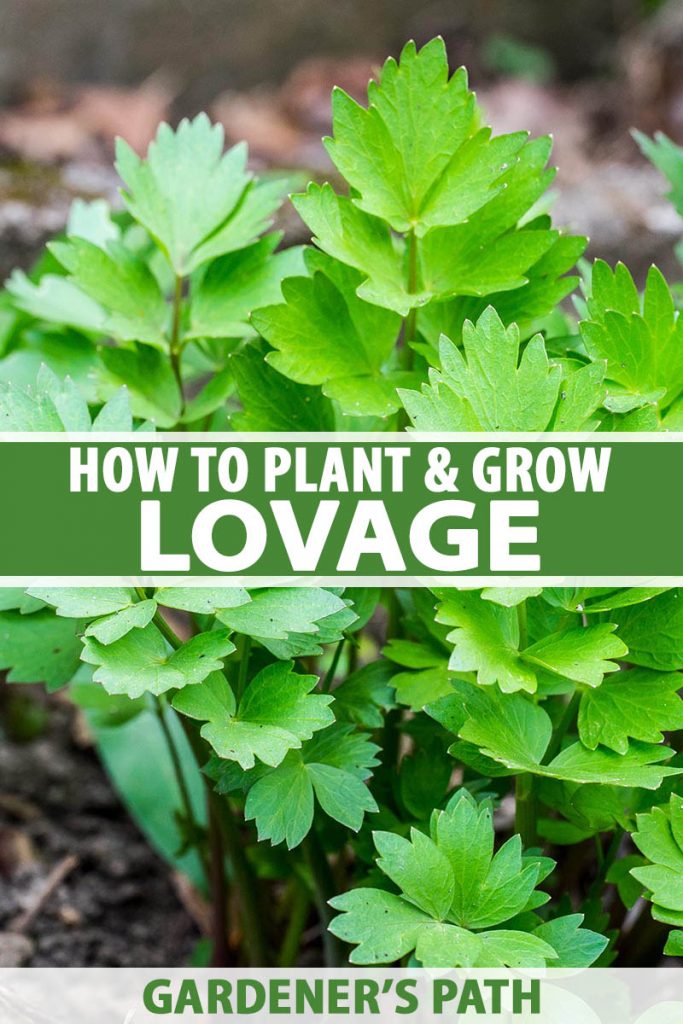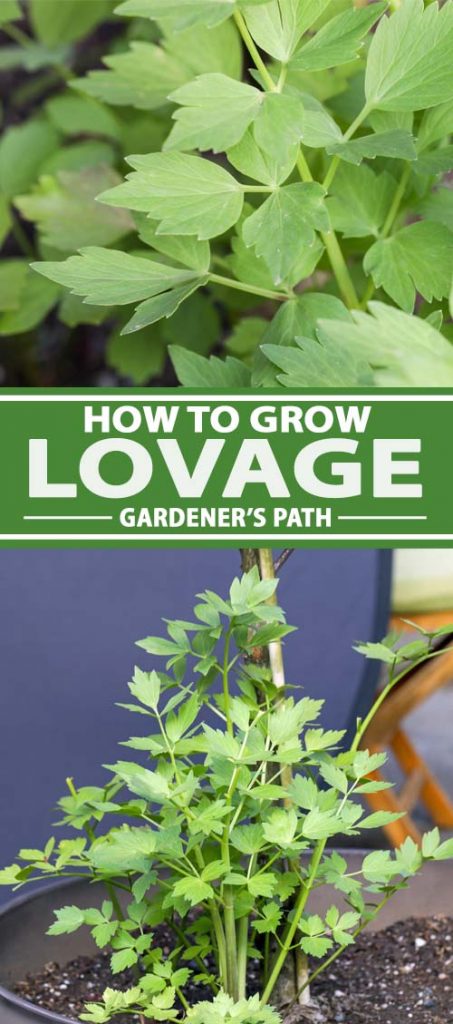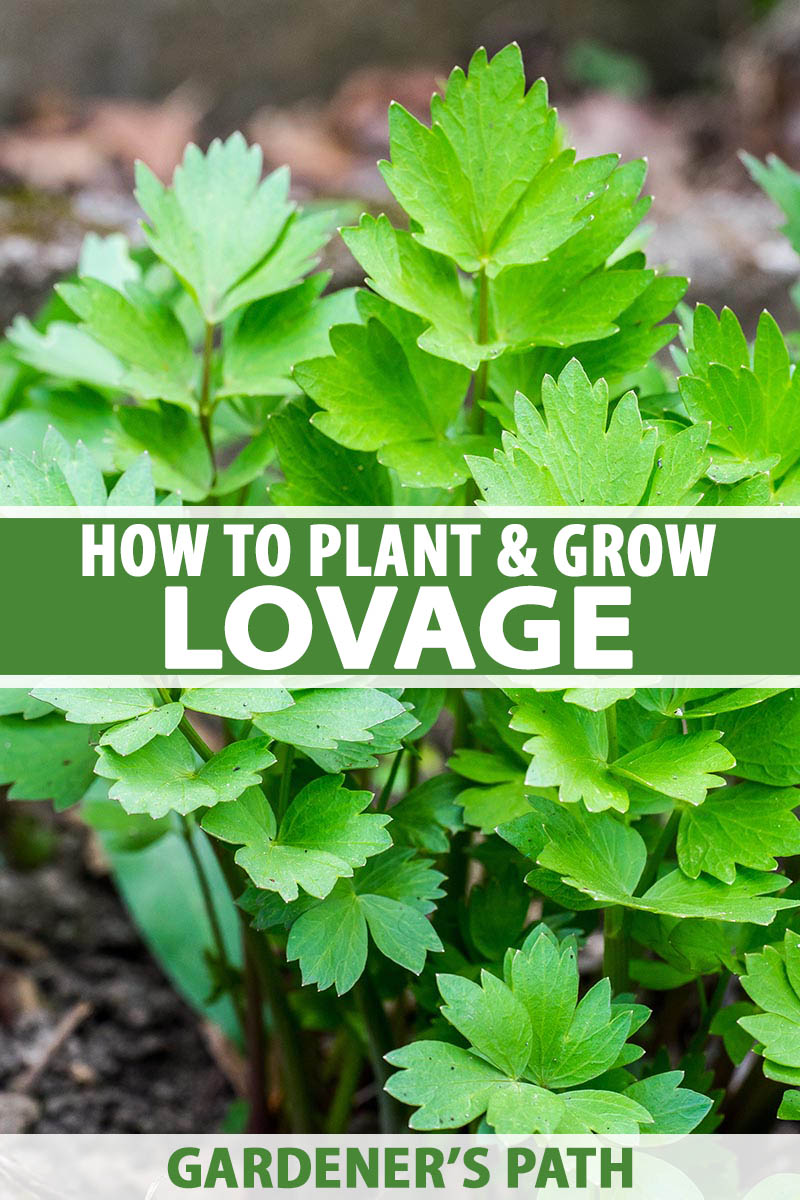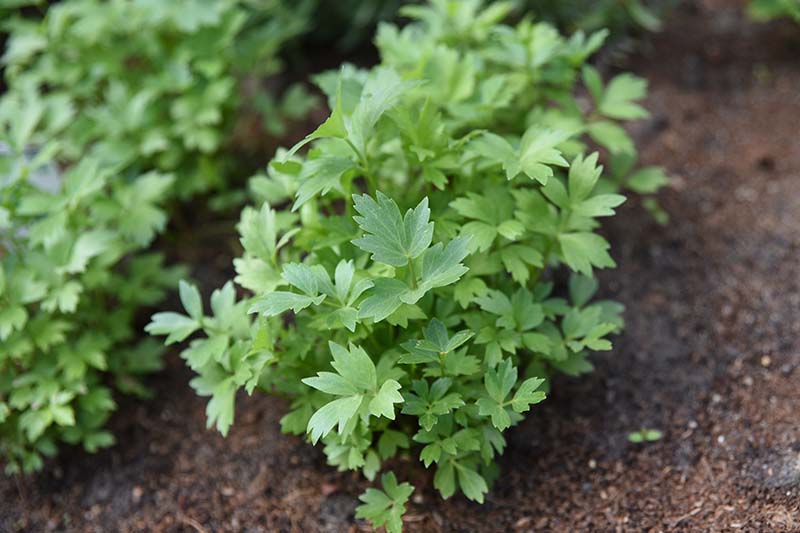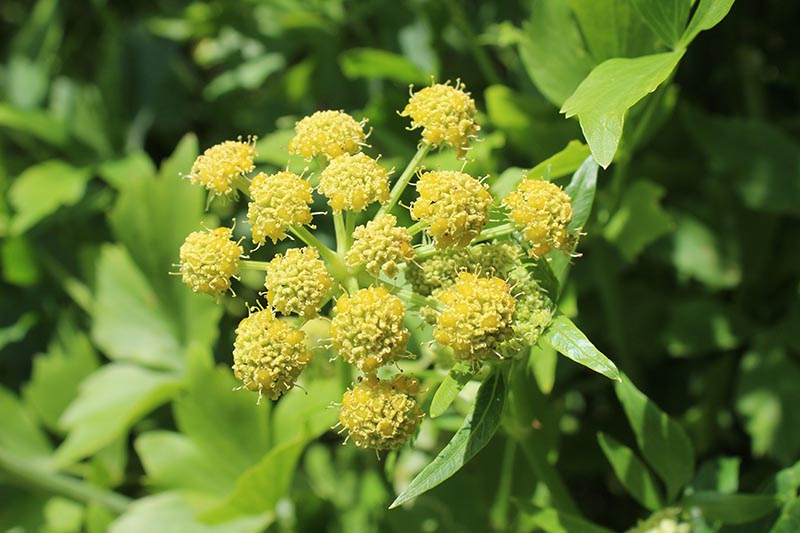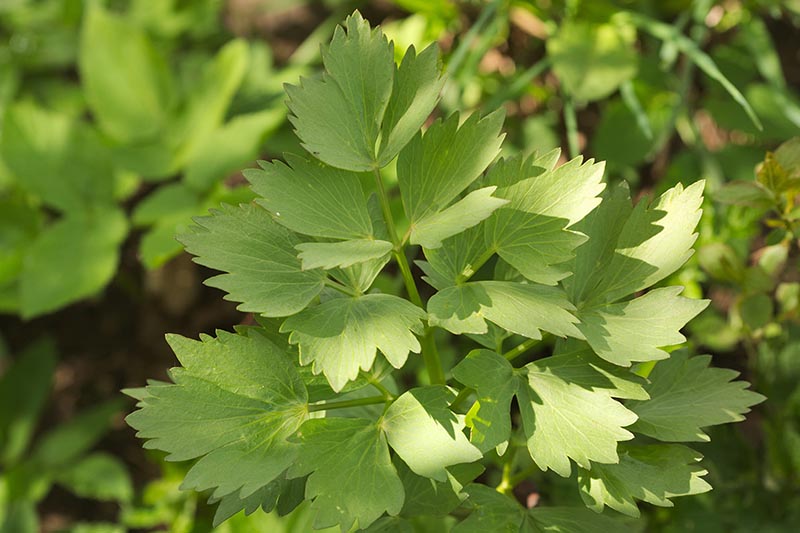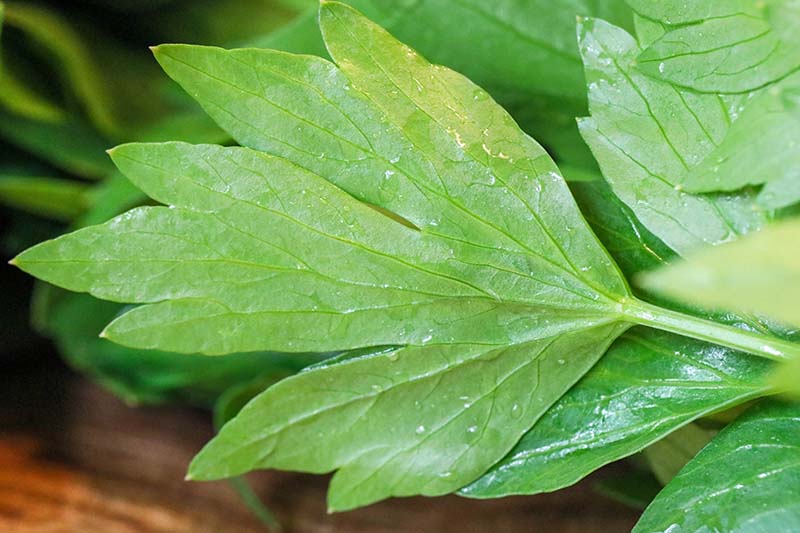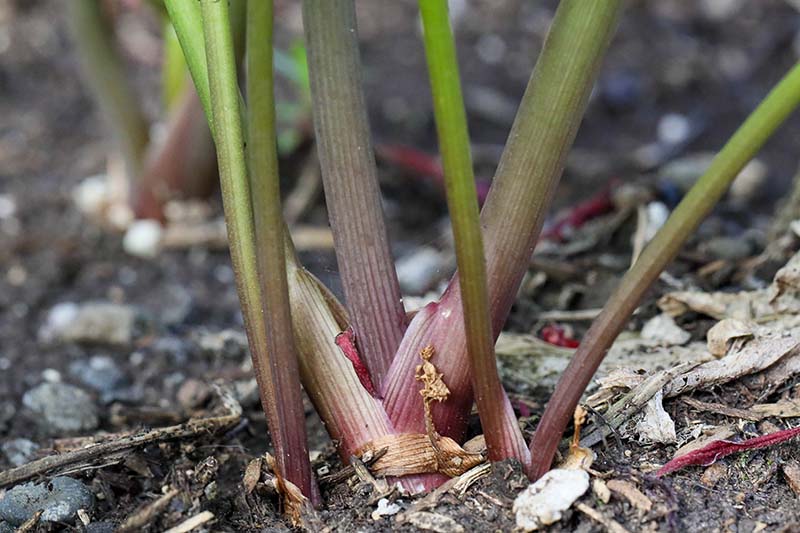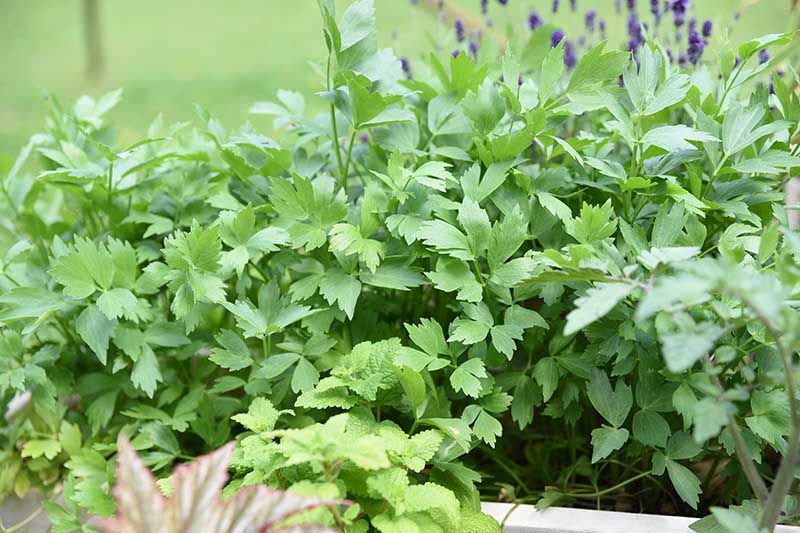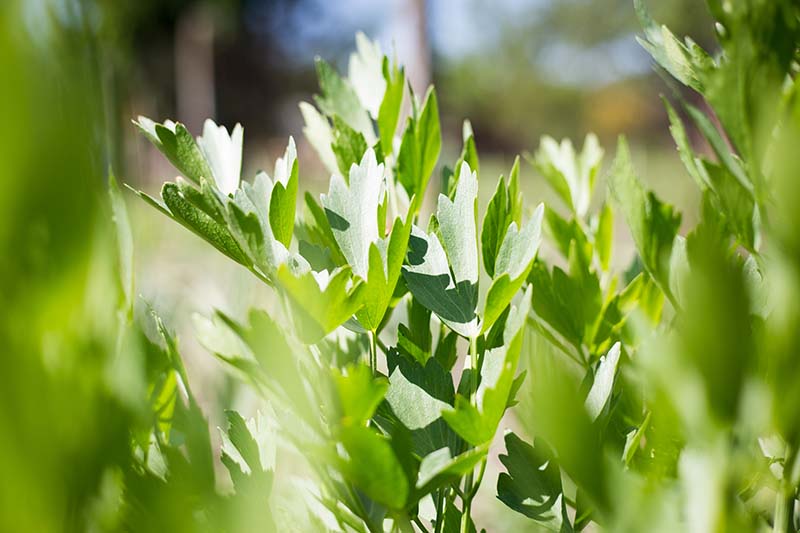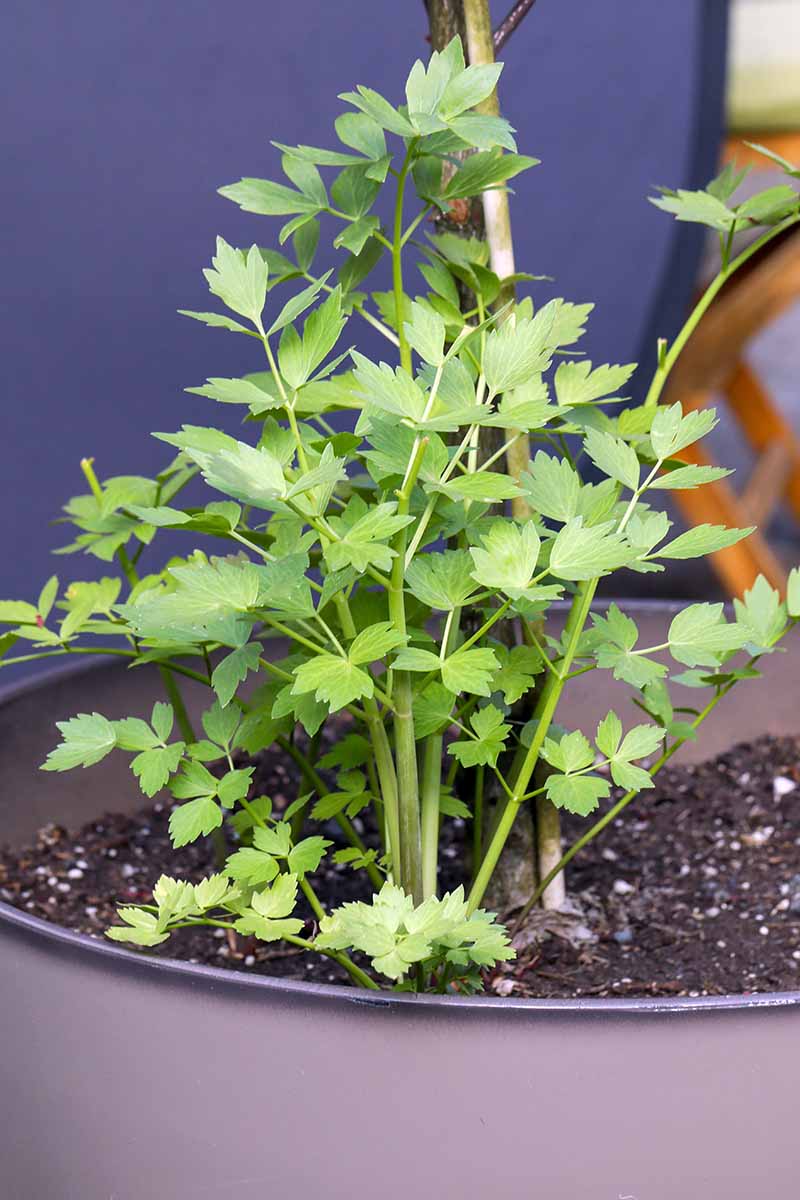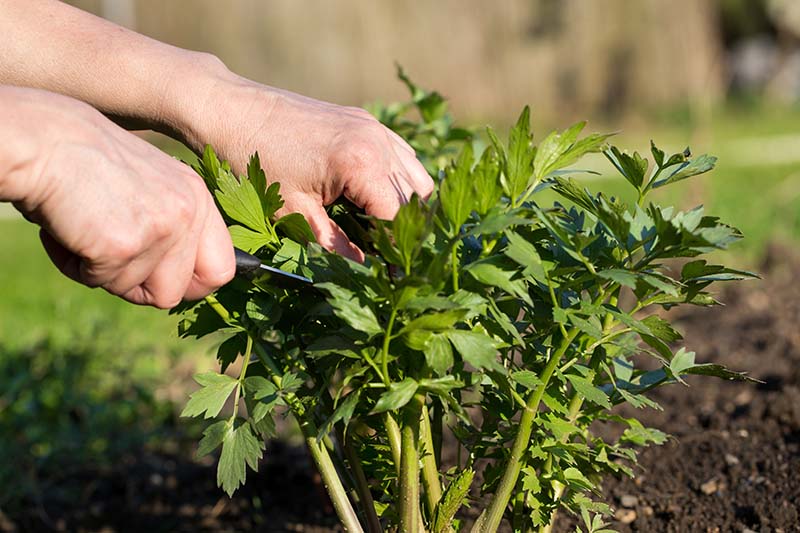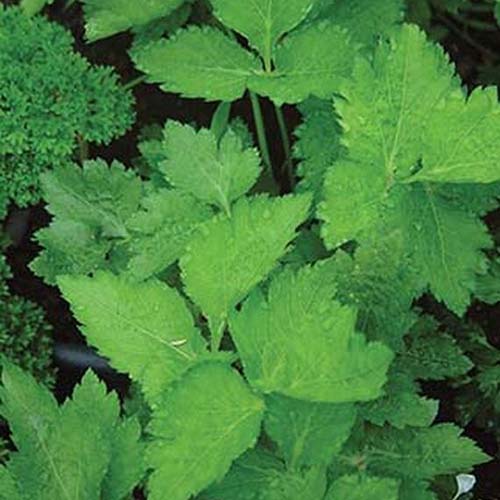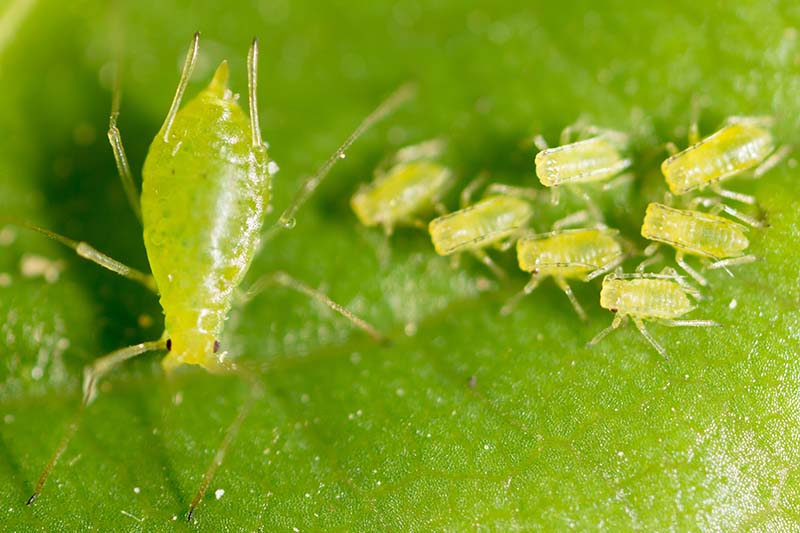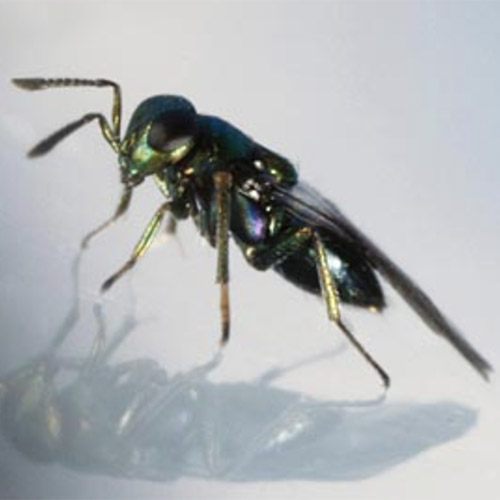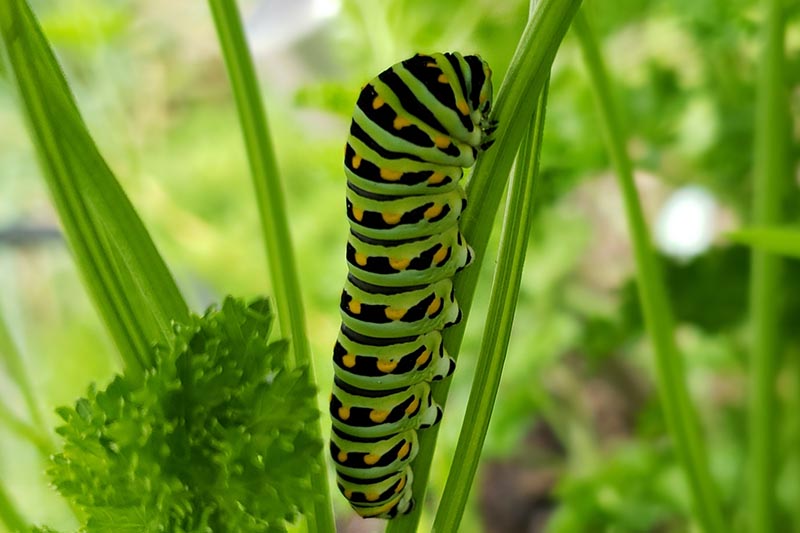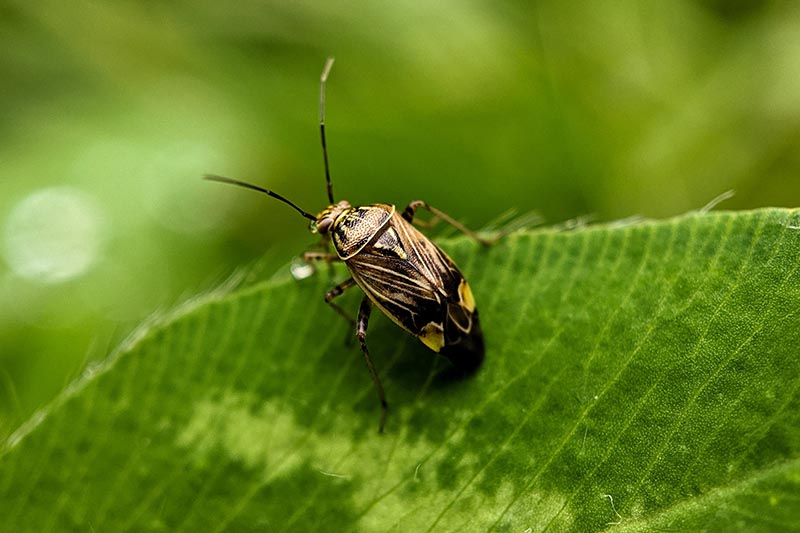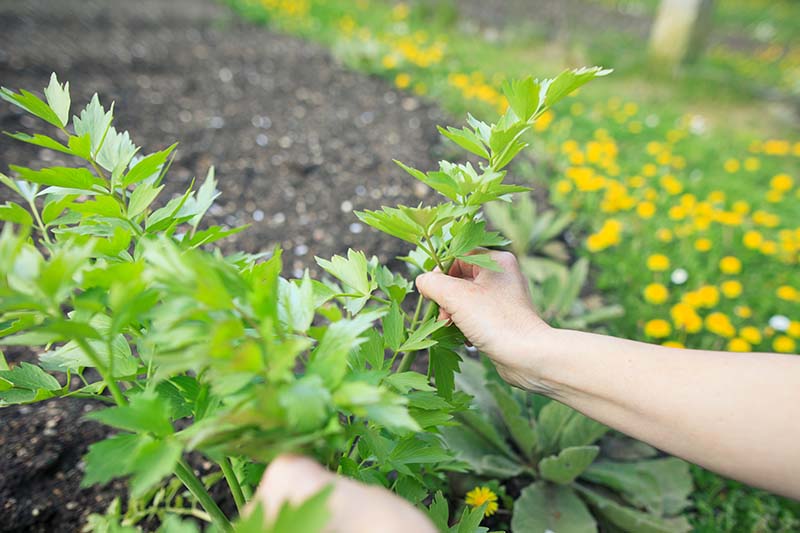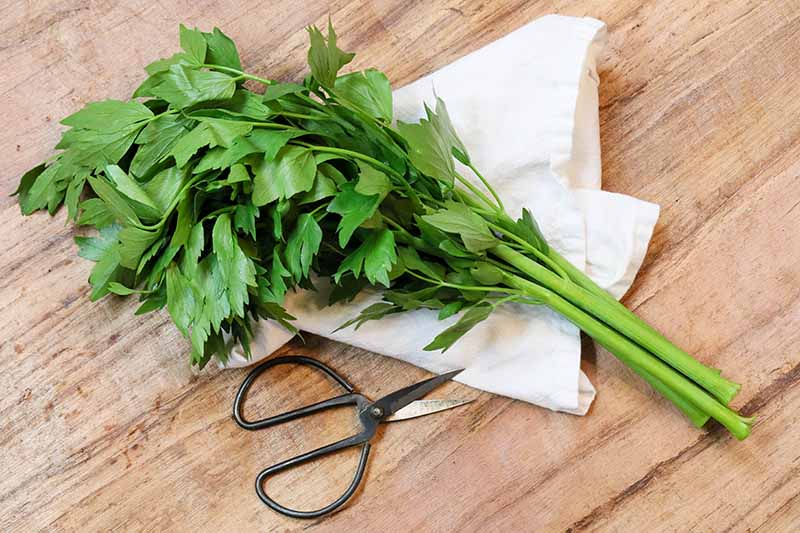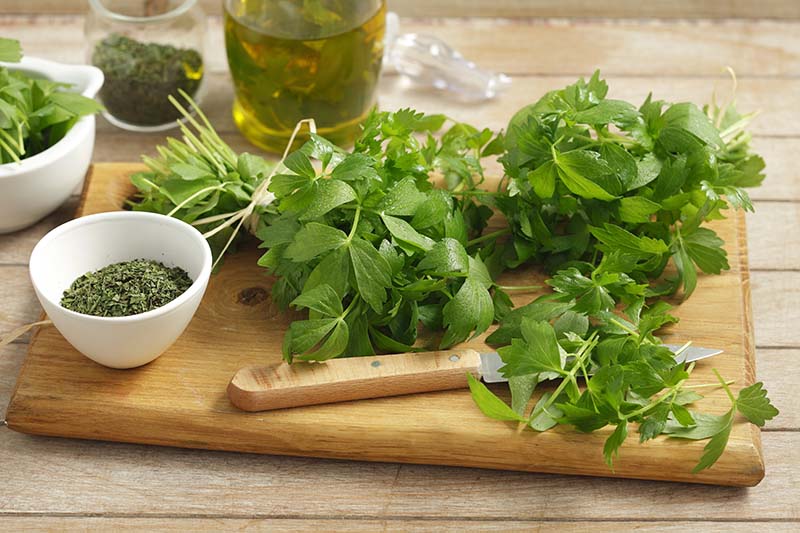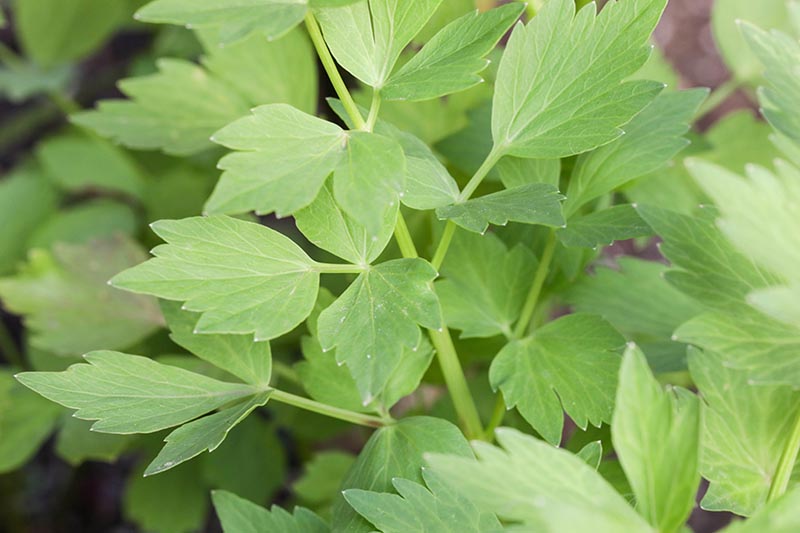What’s not to love about lovage? The entire plant is edible, from root to tip, and it has a bright, fresh flavor that tastes a bit like citrusy celery. It’s also hardy, fuss-free, and reseeds readily without becoming invasive. We link to vendors to help you find relevant products. If you buy from one of our links, we may earn a commission. The dark green, frilly leaves make an impressive showing in the garden on plants that can reach six feet tall at maturity. The bright yellow flowers are marvelously fragrant in July. It’s purported to have some powerful medicinal qualities, as well. Perhaps that’s why the Romans thought lovage was important enough that they brought it with them on their conquest of Britain, and European colonists didn’t want to leave it behind when they traveled to the New World.
Charlemagne declared that it should be grown in every Imperial garden, and Queen Victoria used to carry lovage candies around with her. It’s a mystery to me why it fell out of favor. Happily, Levisticum officinale is finally starting to get more modern-day recognition in home gardens and fine restaurants. Are you ready to make this plant a part of your life? Then keep reading. Here’s what’s ahead in this growing guide:
What Is Lovage?
Lovage is a member of the Apiaceae, or Umbellifer family, and it tastes and looks a lot like celery. It’s sometimes called smellage or maggi plant. In Italy it is often referred to as sedano di monte, or mountain celery.
This herb is native to western Asia, parts of the Middle East, and the Mediterranean region. It has been cultivated around the globe for centuries, and has naturalized in some areas of North America and most of Europe. The English common name “lovage” comes from the Middle English word “lovache,” or “loveache.” Levisticum is derived from the Latin word ligusticum, which in turn is derived from ligusticus – meaning “Ligurian” – from the Liguria region of northwest Italy where this plant was extensively cultivated. Packed with vitamin C and various B-complex vitamins, it also contains quercetin, a plant pigment with anti-inflammatory and anti-oxidant properties.
L. officinale is the definition of a fuss-free plant. It needs minimal care and it will reseed itself readily, so you won’t have to replant it over and over. The plants can grow up to six feet tall, with a 32-inch spread, so they make stately specimens in the garden. Lovage is suitable for gardeners in USDA Hardiness Zones 3-9, and it prefers a cool climate to a hot one. The perennial plants die back to the ground and go dormant during the winter, and reemerge in the spring. They grow quickly, so you can expect your first harvest within a few months of planting. The leaves look a bit like flat leaf parsley, with a dark to medium green color and a glossy texture. The plants produce yellow flowers in umbrella-shaped umbels before setting seed in late summer. The roots are grayish brown with cream interiors. When the plants first emerge from the soil, the stems have a reddish tint to them. Ligusticum scotium, also known as Scottish lovage or Scottish licorice root, is a less-common relative of L. officinale that looks similar, but with a bolder flavor. It’s native to the rocky coasts of the United Kingdom and north into Denmark and Norway.
Medicinal Use
Medicinally, lovage has been used as a diuretic, a stimulant, an anti-inflammatory, to regulate menstrual cycles, and as a treatment for jaundice. It is often made into infusions, tinctures, and essential oils, as well as lozenges and vinegars. It’s also been used cosmetically, and a tincture or salve made from the leaves can be applied to the skin to soothe rashes and psoriasis, and help to clear up acne.
There have been a few studies that support the claim that lovage can act as a diuretic, antibacterial, and anti-inflammatory agent. Because it appears to have some diuretic properties, anyone with heart or kidney problems, or pregnant or lactating women, shouldn’t ingest it. There’s also some question about whether consuming the plant can raise blood pressure by impacting sodium levels in the body, so exercise caution. It can also interact with diuretic medications like Lasix and Diuril, causing individuals who take these to lose too much body fluid, and it may interact with anticoagulants. Consult with your doctor if you’re on any of these medications and plan to add lovage to your diet or herbal treatment plan. Consuming or using lovage on the skin can sometimes cause photodermatitis, a condition that increases light sensitivity, resulting in an inflammatory skin condition.
Propagation
Lovage may be propagated by planting seeds or through root division. Unfortunately, it’s not always easy to find plants at your local nursery, though I’ve had some luck now and then.
By Seed
Direct-sow lovage seeds outdoors once soil temperatures are above 60°F. Sprinkle the seeds on prepared soil and lightly cover them with sand. Alternatively, start seeds indoors 5-6 weeks before the last frost. Place seeds on top of fresh seed starting mix and cover lightly with sand. Maintain even moisture, but don’t allow soil to become waterlogged. Keep in mind that saved seeds can suffer from low germination rates, and they can take up to 20 days to emerge. Only use fresh seeds that are under a year old, as they don’t store well.
Seedlings and Transplants
When your seedlings have at least 2 sets of true leaves – or if you have purchased nursery starts – and all risk of frost has passed, you can transplant them into the garden. Work in plenty of compost or well-rotted manure to your soil, and dig a hole the size of the root ball. Tamp the soil down and water in well.
Root Division
You can also propagate lovage through root division. In the spring, after the plant has grown to about a foot tall, dig it up. To be sure that you’re getting enough of the roots, dig down a foot deep and dig out as wide as the plant’s crown. Lovage has a large and vigorous root system, with taproots up to 35 inches long. While you don’t need to dig up the entire thing, you do want to get enough of the roots for the plant to thrive after it’s replanted. I’ve had success so long as I’m able to keep at least half of the root structure intact. Shake off any excess soil and carefully divide the crown and roots into two sections, using a garden spade, hori-hori knife, or a pair of trimmers. Remove any dead roots or branches from the plant, and then replant one half back where it was. Plant the other half in prepared soil in its new location.
How to Grow
Plant lovage in a part to full sun location. It does best in full sun, but it can tolerate a few hours of shade during the day, particularly in warmer growing zones.
The soil should be well-drained with a slightly acidic pH of around 6.5. It prefers sandy, loamy soil. Add plenty of organic matter when planting – unlike other Mediterranean herbs, it likes rich earth. Keep the soil moist to the touch at all times, but not wet. If the soil dries out, the leaves tend to get bitter. Add an inch or two of leaf mold, peat moss, or grass clippings as a mulch to help retain water. Space plants 18 inches apart. They reach maturity 85-95 days after planting. You can grow lovage in containers, but keep in mind that with its large root system, you’ll need a fairly large pot, at least 12 inches deep and wide. I get around the problem by growing lovage in my potted tree containers. That way, they have plenty of room, with the added bonus of getting a little shade in the heat of the day. The plants themselves don’t need protection from the sun, but I found that doing this when I lived in a hot desert climate helped to keep the soil moist, so the flavor of the leaves didn’t turn bitter. When I get desperate for the flavor of lovage in the winter, I’ll succession plant. Start seeds every few weeks indoors in 8-inch pots, and harvest all the leaves when the plant is about a month old. Lovage gets too large to grow indoors permanently, but it grows quickly enough that you can get a small harvest every few weeks by succession planting. While you don’t have to prune lovage, particularly if you’re harvesting the leaves regularly, it won’t hurt to trim large plants a bit to maintain the shape and size. To do this, take some sharp pruners and cut the stems back to a spot just above a leaf node. To keep the plant healthy, don’t take more than half of the leaves at a time. If you are not harvesting regularly, you should prune once in the middle of the growing season to help promote air circulation and to remove any dead or damaged portions.
If the plant bolts and starts to develop a flower stalk, cut this off unless you want the plant to flower and set seed. Lovage tends to get scraggly looking after it bolts, and the leaves can be unpleasantly bitter. Companion plant L. officinale with tubers like potatoes. Also keep in mind that lovage flowers attract beneficial parasitic wasps and tachinid flies to the garden, which may help you to battle caterpillars that damage crops.
Growing Tips
Grow in full to part sun Plant in rich, well-drained soil Keep moist but not wet
Where to Buy
If you want to get a jump start on the growing season, you can buy seedlings to transplant into your garden.
Insects
The main insect pests to be aware of are: Lovage 3 Seedlings You can find a set of 3 plants available at Burpee. Or, if you prefer to start your own plants from seed, you can buy a half-ounce packet or a one-pound bag of seeds from True Leaf Market.
Managing Pests and Disease
Lovage is generally fortunate to not be bothered much by pests and disease. That doesn’t mean it’s immune, however. There are a few things to watch out for.
Aphids
Aphids can attack lovage plants (and a ton of other plants in the garden, as well). If you see tiny little green, brown, yellow, black, gray, or pink, soft-bodied, wingless insects on your plants, you may have an infestation.
If you have ants on your lovage plants, this can also be an indicator that you have aphids, because they like to munch on the honeydew that aphids leave behind. Aphids suck the juices out of plants, so you may see stunted, yellowing, curling, or misshapen leaves. You may also see black mold that grows in the sugary honeydew. Even if they don’t harm your plant, they can spread disease, so you don’t want them around. The first line of attack is to regularly spray your plant with a blast of water from the hose to knock them loose. After that, you can try dusting your plant with diatomaceous earth to kill off any lingering aphids. If things are still looking bad and you can’t get rid of them, use neem oil or spray plants with a mix of 1 part dish soap to 5 parts water. Spray either neem oil or soapy water every few days for 2 weeks. See this guide to learn more about managing aphids in your garden.
Leaf Miners
Leaf miners chew tunnels into the leaves of plants, and this can cause some serious damage. You’ll know that you have them if you see telltale squiggly tunnels that look kind of like a maze on your plant leaves. The miners themselves are tiny little worms – the larvae of small flies – and they are difficult to observe. So the best way to know if you have this pest is to look for the tunnels. You can control leaf miners by spraying neem oil on plants starting in the early spring and continuing through summer. If you decide to go the pesticide route, you’ll need to figure out the right time to spray. Grab a few infected leaves and put them in a sealed, clear bag. Once the flies emerge, start spraying your plant every day for a week. Diglyphus isaea Live Beneficial Wasps These beneficial insects are available from Arbico Organics. I personally find the most effective method is to crush the leaves along the miner trails between my fingers, or to clip damaged leaves off of my plants and dispose of them. Use a spinosad spray or a spray that contains Bacillus thuringiensis (Bt). Keep in mind that if you use a chemical pesticide or neem oil, you risk killing off the beneficial bugs as well. For more information, read our guide on leaf miner control.
Parsley Worms
The parsley worm, Papilio polyxenes, is a pest that eats plants in the parsley family, as its name implies. This worm is the larvae of the beautiful swallowtail butterfly. The larvae are actually pretty attractive as far as pests go, with bright green, yellow, and black stripes along their two-inch-long bodies. You’ll likely spot this colorful worm before you start to notice the damage to your plants, but keep an eye out for missing or nibbled-on leaves and frass as well, indicators that you have an infestation. Parsley worms aren’t all bad. The swallowtail butterfly is a pollinator of native plants, and some people plant parsley and dill to attract them. For this reason, I advocate using cautious measures to get rid of the larvae.
Handpick any worms that you spot and relocate them if you can, rather than disposing of them. Planting a “trap crop” – a few dill plants, perhaps – for the larvae to feed on, and bringing the worms over to this plant when you find them on your food crops, is a workable solution that will help to maintain pollinator populations. Use floating row covers in the late spring to prevent the adult butterflies from landing on your plants and laying their eggs. If you really can’t stand having them on your plants, use a spray that contains Bt.
Tarnished Plant Bug
The tarnished plant bug, Lygus lineolaris, is an ugly little beetle (if you ask me!) with yellowish-brown spots and black lines on its backs and legs. They’re about a fourth of an inch long as adults, and have long legs and antennae.
Not only does it use its needle-like mouthparts to puncture plants, it spreads disease as well. If you have an infestation of this bug, your plant will likely have distorted, yellowed leaves and growth can be stunted. Plants may fail to form flowers, as well. It’s important to keep weeds like goldenrod, vetch, wild carrot, clover, and dock away from your lovage, because they are host plants preferred by this insect. Beyond that, you can cover plants with floating row covers and place white sticky traps around the garden two feet above the ground.
Disease
This herb is mostly untroubled by disease, but there are a couple that can cause problems.
Early Blight
Early blight is a fungal disease caused by Alternaria solani. If you see circular brown spots on the leaves and stems of your plants, either with or without yellow halos around them, it could be early blight. You can remove infected branches and spray plants with a copper-based fungicide to try to control it, but prevention is best. To prevent this infection, rotate crops regularly and give your plants plenty of space. Prune them regularly to improve air circulation. Also, be cautious about adding too much mulch to the soil, as this can cause it to become waterlogged.
Leaf Spot
Leaf spot may be caused by a variety of different types of bacteria and fungi. You’ll know you have it if you see black water-soaked spots on leaves. Left uncontrolled, the spots will merge together, and entire leaves can turn yellow and drop. The pathogens that cause leaf spot prefer warm temperatures and lots of moisture. Wind and water can transmit the bacteria and fungi between plants, and they can overwinter in garden debris and soil. That’s why it’s important to keep your garden clean. Rake up any plant debris, and add a layer of mulch to prevent water from splashing up onto your plants. Water at the base of plants and avoid overhead irrigation. There is no cure, but a mix of 1 part baking soda, 3 parts vegetable oil, and 1 part liquid soap, added to a gallon of water and sprayed on plants, can help to slow its progression.
Harvesting
In the first year, only harvest the leaves of your plant. In the second year, you can start to harvest the stalks and roots. If you plan to harvest the entire plant, roots and all, do it in October when the plant has reached its full size.
Young leaves taste best. Harvest them in the morning, after the dew has dried. Take leaves from the outside of the plant first. New growth will resprout from locations where you harvest. Don’t wash the leaves until you’re ready to use them, as it can cause them to rot. Fresh leaves can be kept in the crisper drawer of the refrigerator for up to a week. Harvest seeds when the seed heads turn brown. Snip off entire heads and put them in a paper bag to dry. Once they’re dry, roll the seed heads in your hands to remove the brown casings. Harvest the roots by digging them up with a garden fork. Brush the dirt off, but don’t wash them immediately. You can store them in the refrigerator for several weeks before using.
Preserving
You can preserve lovage roots by washing the roots, slicing them thin, and drying the pieces in a food dehydrator at its lowest setting or in the oven for 6 to 8 hours. You can also dry the leaves slowly at a low temperature setting, but they don’t retain much of their flavor when dried. If you do choose to dehydrate the leaves, you can grind them for use as a powdered spice. Find more info on drying fresh herbs here.
Preserve the leaves by freezing them. You can do this by blanching them in boiling water for about 30 seconds and then shocking them in cold water to stop the cooking process. Drain, and dry the leaves off on a paper towel then lay them on trays and put them in the freezer. After they have frozen, transfer the leaves to airtight freezer storage bags. The stems can be preserved by pickling. Use a ratio of three parts water to one part vinegar, plus 1 tablespoon of salt per cup of vinegar. Bring the mixture to a boil, and stir until the salt is dissolved. Remove from the heat and allow the brine to cool. Add a sliced shallot, some pink peppercorns, or celery seeds. Fill a canning jar with the lovage stems, leaving an inch of room at the top. Fill the jar with brine mixture, covering the stalks. Refrigerate and use within 2 months. You can also chop up the stems and freeze them. They’ll be good for up to six months.
Recipes and Cooking Ideas
When it comes to cooking, you can use the roots of 2-year-old plants, as well as the leaves, stems, and ripe seeds of the plant. Lovage tastes like celery, a bit sweeter with a stronger flavor. It has hints of anise and parsley, too. The leaves are a bit milder than the stems.
While lots of people recommend using it as a substitute for celery, I find that this herb has a flavor all its own. I’ve even found that celery-hating friends adore lovage. You need to taste it to appreciate the unique flavor. That said, you can use the stems in any recipe where you would typically use celery or celery leaves. You can use the stems in egg salad, potato salad, pasta salad, and omelets. You can even saute them in garlic as a vegetable side dish. Keep in mind that they have a bold taste, so experiment to figure out your preference in terms of how much to add. You can even take your Bloody Marys up a notch and use long, hollow lovage stems as straws. The seeds and any oil extracted from them can be used to make liqueurs, flavored oils, and sweet treats. You can also bake them into bread as you would caraway seed. I like to crush the seeds and mix them with salt to make a seasoning for veggies and meat. Peel and grate the roots over salads or sandwiches, or cook them as you would salsify.
Quick Reference Growing Guide
Give Some Love to This Unusual Herb
I’m a huge fan of lovage, not just because of its unique flavor, but also because I’m a sucker for a plant that doesn’t need constant maintenance. I also appreciate that it attracts some beneficial insects, and I’ve noticed that I battle fewer caterpillar problems in the areas of my garden where I have lovage plants (with the exception of the occasional visit from a parsley worm). Give this pungent herb a go. It’s a treat that everyone should try at least once. After you taste the sweet, anise and celery-like flavor for the first time, I bet you’ll have a hankering for more. If so, give lovage a grow, and then come back and tell me all the ways you like to enjoy the harvest. I’m always looking for new ways to add lovage to my cooking. If you are curious about adding some other lesser-known medicinal herbs to the garden you’ll need these guides next:
How to Plant and Grow Purslane How to Grow and Use Motherwort How to Grow Stinging Nettle in Your Garden
Photos by Kristine Lofgren © Ask the Experts, LLC. ALL RIGHTS RESERVED. See our TOS for more details. Originally published September 6, 2014. Last updated May 11, 2020. Product photos via Arbico Organics and Burpee. Uncredited photos: Shutterstock. With additional writing and editing by Clare Groom and Allison Sidhu. The staff at Gardener’s Path are not medical professionals and this article should not be construed as medical advice intended to assess, diagnose, prescribe, or promise cure. Gardener’s Path and Ask the Experts, LLC assume no liability for the use or misuse of the material presented above. Always consult with a medical professional before changing your diet or using plant-based remedies or supplements for health and wellness.
